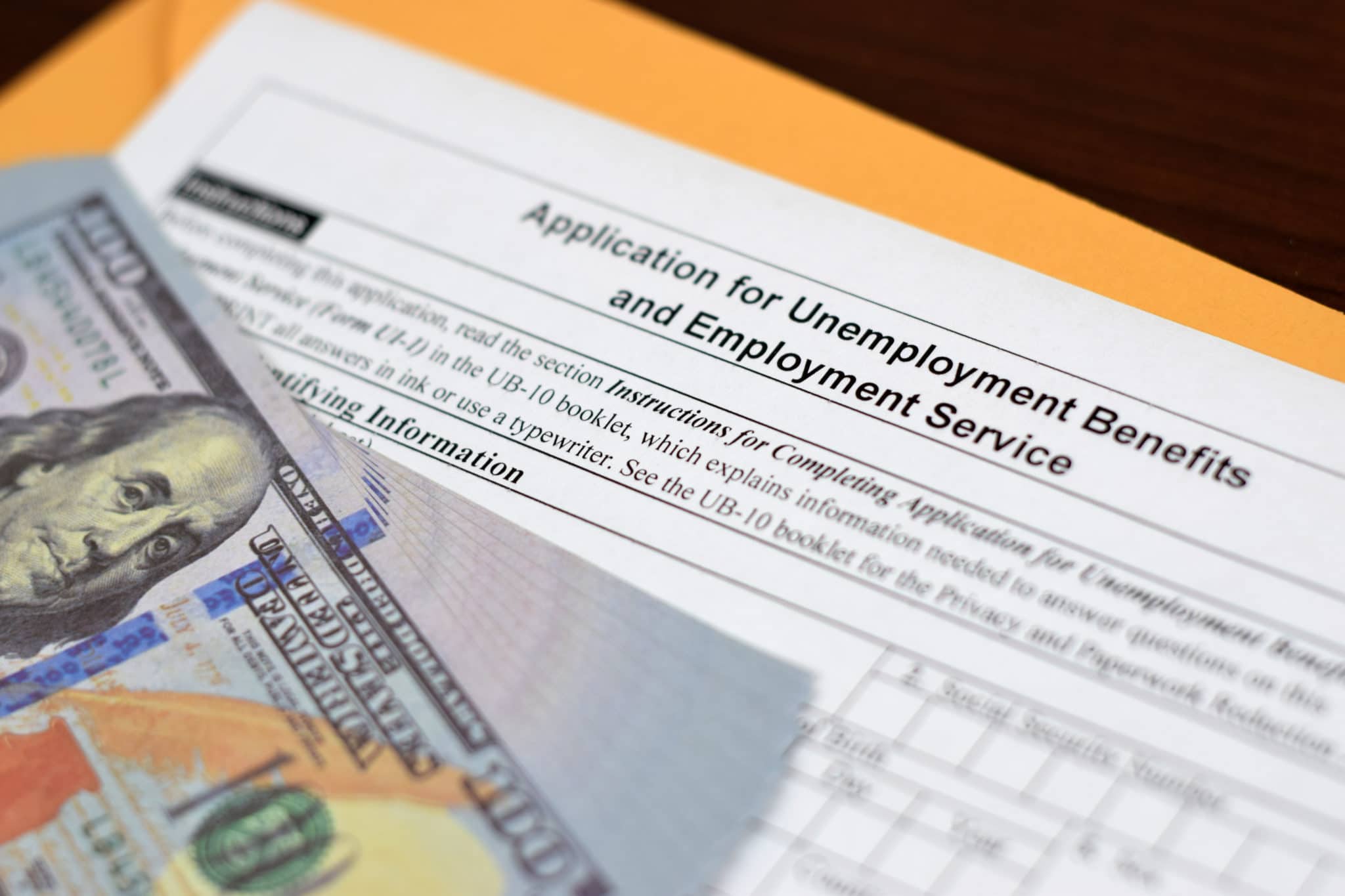Even in a strong economy, business can be unpredictable, and layoffs happen. If you find yourself in a situation where you have been laid off or have lost your job, filing for unemployment might be the right step to keep your finances steady while you look for new work. Here, you’ll find information about who is eligible for unemployment, how much you can expect to receive, and how to go about filing for benefits.
Table of Contents
What to Do If You Were Laid Off in California
If you were laid off or the company closed, there are a few steps you need to take. First, don’t quit your job when you hear the company is shutting down or you’re being laid off. If you quit, you lose the right to claim unemployment benefits. Your first step should be to contact your supervisor to learn as much as you can about the layoff process and how the company plans to manage it. Some companies may provide severance pay or benefits for a certain amount of time after a layoff, although that’s less likely if the business is closing.

An expert tip from Erik
Keep in mind that California Worker Adjustment and Retraining Notification (WARN) laws do require employers to give affected parties 60-day advance notice before conducting mass layoffs in certain circumstances. This is intended to protect workers, giving them time to plan their next steps and adjust to the transition.
Gather all of the information you can about the layoff process. Next, you should file for unemployment benefits.
How to Qualify for California Unemployment Benefits
If you quit your job, you’re typically not eligible for unemployment benefits. If you get laid off, it’s a different story. Employers over a certain size are required to pay unemployment taxes to cover the people they fire or lay off. To qualify for unemployment benefits, you have to meet three criteria.
First, you must be unemployed through no fault of your own — which includes getting laid off. Note that getting fired due to misconduct may disqualify you from claiming benefits. If you are fired however, because you simply weren’t a good fit for the job, or were not performing well despite your efforts, you should still be eligible to apply for unemployment. If you left your job for another reason, such as health issues, a family matter, or a need to change cities, you will likely also remain eligible.
Second, you have to be able to work and be actively seeking work. As you are looking for a new job, keep a list of companies to which you have applied, the dates on which you submitted applications and the names of any contacts and meetings that you take. This record will allow you to prove that you have made a reasonable attempt to find a new position and may be requested by the Employment Development Department. If you are offered a suitable position, you must take it.
California Unemployment Income Requirements
Third, you have to meet certain income requirements.
The income requirements are measured over a “base period,” which is the earliest four of the most recent five complete quarters before you file your claim. For example, say you filed your claim in October 2018. That’s the 4th quarter of 2018. So, you count back five quarters from there and end up at the 3rd quarter of 2017. That means your base period starts at July 1, 2017 (the start of the 3rd quarter of 2017) and runs until June 30, 2018 (the end of the 2nd quarter of 2018).
- Q4 2018: October – December 2018 (claim filed in October)
- Q3 2018: July – September 2018
- Q2 2018: April – June 2018 (base period)
- Q1 2018: January – March 2018 (base period)
- Q4 2017: October – December 2017 (base period)
- Q3 2017: July – September 2017 (base period)
To meet the income requirements, you have to meet one of two standards. First, you qualify if you earned at least $1,300 in at least one quarter of the base period. You can also qualify if you earned at least $900 in your highest paid quarter of the base period and you earned at least 1.25 times the amount you earned in your highest paid quarter of the base period in total.
For example, say you earned $1,000 in your highest paid quarter of the base period and $1,500 over the course of the entire period. You didn’t make the $1,300 requirement. However, you still qualify because you earned more than $900 in your highest paid quarter and you earned more than 1.25 times your earnings from the highest quarter over the whole base period.
Qualifying example, using the base period defined above:
- Q2 2018: April – June 2018 (earned $200)
- Q1 2018: January – March 2018 (earned $1,000 – highest paid quarter)
- Q4 2017: October – December 2017 (earned $200)
- Q3 2017: July – September 2017 (earned $100)
The highest paid quarter during the base period was $1,000, and the total earned in base period was $1500. The total, $1,500, is 1.5 times the earnings from the highest period, therefore qualifying.
If, however, you earned $1,000 in your highest paid quarter and just $1,100 over the course of the entire period, however, you wouldn’t qualify. That’s only 1.1 times your earnings in your highest paid quarter.
How much does unemployment pay in CA?
The amount of unemployment benefits you may receive is also based on your earnings during the base period. First, take the amount you earned in your highest paid quarter and divide it by 25. That’s your weekly benefit allowance (WBA). If your highest quarter was $1,200, for example, your WBA would be $1200/25 = $48.
Next, you need to find your maximum benefit amount (MBA). That’s the total payout you can get through unemployment. Your MBA is either your WBA times 26 or half of your total wages over the base period, whichever is less. So, take your WBA and multiply it by 26. If your WBA is $48, that comes out to $1,248.
Let’s say you earned $4,800 over the course of your base period. Half of that is $2,400. So, your MBA is $1,144, as this is the smaller of the two numbers. Regardless of your income, however, the maximum benefit at the time this article is published is $1,950.
Note that this isn’t an exact calculation — the state will consider your particular circumstances and may adjust the amount of benefits you receive. Also, the minimum WBA is $40 and the maximum is $450, so there may be adjustments to fit within those requirements.
How to file for California Unemployment Benefits
You can file for California unemployment benefits online; you’ll fill out your personal and income information and they’ll determine whether you meet the eligibility requirements. Then, they’ll schedule a phone interview and determine how much you’ll receive. This is where they may make adjustments to the amount of your WBA.
Remember that unemployment benefits last for a maximum of 26 weeks, so it’s best to start the job hunt as early as possible.
Other Financial Issues
If you have no financial obligations, unemployment benefits may be enough to get you through until you find another job. If you’re facing a mortgage, foreclosure, car payment, credit card debt, and other obligations, it can be difficult to make ends meet. You may be able to refinance or work with your lender to temporarily lower or stop payments — you should reach out to them as soon as you know you won’t be able to pay.
If that isn’t enough, remember that you always have the option to file bankruptcy. That can wipe out your unsecured debts and give you a clean financial slate. Plus, most debtors don’t have to give up any assets when they file.
If you’re struggling to make ends meet with your debts, we may be able to help. Contact Borowitz & Clark today for a free case evaluation.
